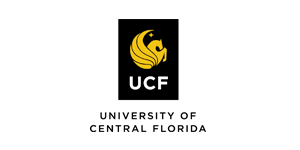- Выполненные проекты
- The University of Central Florida

Self-service analytics advances higher education

SAS gives users fast access to data through self-service analytics.

Customized
Dashboards for each business unit
University of Central Florida achieved this using • SAS® Visual Analytics
The University of Central Florida depends on analytics and data visualization to uncover insights for increased student success
As a preeminent research university, the University of Central Florida (UCF) understands how crucial data analysis is to maintaining its reputation. That commitment isn’t confined to the labs or classrooms. Data informs and affects every aspect of the organization, from students to programs to resources and initiatives.
That’s where the office of Institutional Knowledge Management (IKM) plays an essential role, serving as the official source of UCF institutional data. It provides accurate, insightful and practical information to the university and the public.
“We oversee the development and maintenance of the university's data warehouse and reporting systems,” says Linda Sullivan, Assistant Vice President for IKM. “The analysis we conduct serves as a foundation for decision making, policy formation and institutional excellence. As such, we are driven by our users’ expectations and needs.”
SAS reduces our time spent collecting data so we can quickly make data-informed decisions. Linda Sullivan Assistant Vice President for IKM University of Central Florida
Providing self-service analytics
To meet user expectations, UCF needed to shift from text and table delivery of information to providing visualizations and predictive analytics, as users wanted the ability to visually explore and analyze data. UCF uses SAS® Visual Analytics to meet these needs and to provide users with fast access to data and information through self-service analytics.
“SAS Visual Analytics has been very important because it allows us to provide customized reports and information to different units depending on what their needs are,” Sullivan says. “It also has reduced the time our users spend on collecting data and information so they can quickly make data-informed decisions.”
Using dashboards to track initiatives
The IKM office was able to help with a new initiative championed by UCF’s provost called Challenge 2020, where each of UCF’s colleges has set annual targets through 2020 toward meeting strategic plan metrics in student success, faculty excellence, research and philanthropy. “We’re using SAS Visual Analytics to deliver that dashboard, which maps their trends and trajectories toward meeting their goals,” Sullivan explains. “Based on that, the deans of the colleges are now seeing information about their students, faculty and performance that they didn’t have access to before or had never seen in this light. They can use this information to decide how they’re going to change things or what they need to modify to meet these goals.”
The IKM team also is collaborating with UCF’s Office of Undergraduate Research. In the past, the office used Microsoft Excel spreadsheets to collect self-reported data, but it struggled to identify which students participated in undergraduate research, and it was unable to track which faculty members were mentoring students in the various research programs. Sullivan’s team worked with the office to pull the data together and develop a dashboard. It was the first time the Office of Undergraduate Research could get this information aggregated in one place.
“Now users can access the dashboard to look at research programs over the years and trends of participation,” Sullivan says. “They can see the various colleges and faculty who participated as mentors, get accurate student counts, identify the students and compare those who were participating with the full student body.”
With this dashboard, UCF is better positioned to encourage student participation in high-impact services, such as internships, study abroad opportunities and undergrad research, and it has the foundation to promote and track these initiatives.
University of Central Florida – Facts & Figures
#1
Largest US university by undergraduate enrollment
Faster
Decisions informed by data
2020
Target year for strategic goals
Uncovering insights with analytics
While digging into data, Sullivan’s team made an unexpected discovery – an interesting trend regarding student attrition. “Normally, you would expect students who have low GPAs or are on probation to be the ones that leave the university,” she says. “But using SAS Visual Analytics, we discovered that a number of students who withdrew from the university were actually high performers, with GPAs between 3.0 and 4.0. And they’re not just going to another university; they are simply dropping out.
So that’s opened up another area of inquiry – why those high-performing students are dropping out of education. Now that we are aware that this is occurring, we plan to study the trend and determine the best way to proactively reach out to students to encourage continued education.”
Part of the appeal of analytics is that it opens the door to other questions, allowing the university to dig into areas that might not have been looked at before. For instance, UCF would like to apply analytics to studying student financial assistance. “The IKM team is collaborating with the Office of Student Financial Assistance to provide analytics support so it can determine how to better use the financial assistance available to help with student retention and meet students’ needs,” Sullivan says.
“Ultimately, as higher education is being held more accountable to performance-driven metrics from the state and federal government and our Board of Trustees, questions posed to us are becoming more sophisticated. And SAS helps us answer these complex questions.”
Следующие шаги
Результаты, описанные в этой истории, относятся к конкретной ситуации заказчика, его бизнес-моделям, исходным данным и вычислительным средам. Опыт каждого клиента SAS уникален и отличается техническими параметрами создаваемой системы, поэтому все заявления носят ситуативный, а не общий характер. Фактические результаты, экономия, производительность и изменения в ключевых показателях эффективности могут варьироваться в зависимости от конфигурации решения и бизнес-условий каждого заказчика. SAS не гарантирует и не утверждает, что каждый заказчик получит такие же результаты, как описаны здесь. Единственными гарантиями для продуктов и услуг SAS являются те, что заявлены в письменном соглашении по соответствующим продуктам и услугам. Ничто из описанного в данном материале не может расцениваться как дополнительные гарантии. Заказчики поделились с SAS своими достижениями и результатами в соответствии с условиями договора или после подведения итогов успешного внедрения программного обеспечения SAS. Наименования продуктов являются торговыми марками соответствующих компаний.
